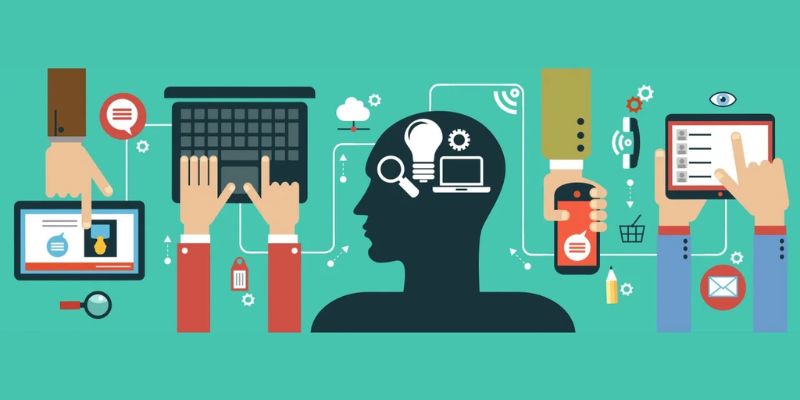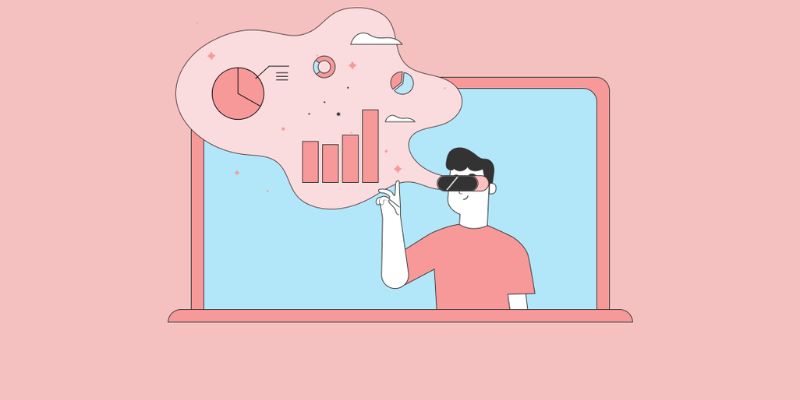Artificial Intelligence Exposed: Unraveling the Vulnerabilities of AI Systems
Imagine a world where AI systems run flawlessly. It’s not our world. Even the smartest AI can fail. That’s why understanding potential vulnerabilities of AI systems is key. In this deep dive, we’ll pull back the curtain on where AI can trip up. Expect to see the full, unpolished truth. From neural network limits to AI’s biggest flaws, we lay it all out. We then tackle AI security risks head-on. We’ve got prevention strategies for data poisoning and we’re sharing them. Ethical troubles? Covered. We show you how to ensure fairness and keep AI in check. Lastly, we gear up with defenses for a stronger, tougher AI. Stick around; we’re about to get real about AI’s weak spots.
Diagnosing the Vulnerabilities in AI Systems
Understanding the Limitations of Neural Networks
Imagine neural networks like nets catching fish, where fish are answers we want. They sift through data to find patterns, like how nets catch different fish. But, sometimes nets miss or catch things they shouldn’t. It’s the same with AI.
Limitations are real in neural networks. They sometimes miss or misread data, just like a torn net. They might not handle new or different info well. If you only teach them with images of small fish, they might miss the big one. They also face threats like bad data thrown into their learning, much like trash polluting the water, confusing them. We call this AI data poisoning, and it’s a sneaky danger.
Recognizing Common AI System Flaws
Common flaws in AI systems can trip them up. It’s like a game where players find weak spots they can use to win. Bad folks can trick AI by making tiny changes to data that humans wouldn’t notice. We call these changes adversarial attacks. Imagine a teacher gives a test, but someone changes the questions so slight that the smartest kid can’t pass. That’s what adversarial attacks can do to AI.
AI systems also have to make choices they can explain. If they can’t, people won’t trust them. It’s like if someone picked a team captain but couldn’t say why. Everyone would be confused and doubtful. AI must show its work.
AI system hacking happens, too. Think of this like a strong lock on a door. If a hacker finds a hidden key, that’s a backdoor threat. They sneak into the system and can cause big trouble. We must keep AI safe from this.
Also, AI needs solid rules to follow – AI regulatory compliance – and these rules should be as clear as classroom rules. Without them, AI might not act fair or protect privacy like it should. Think of it like a sport without rules – it would just be chaos!
We do AI risk assessment to spot these possible snags before they happen. It’s a bit like planning for a field trip. We check the weather, the road, and make sure the bus works. Getting ready keeps everyone safe.
Mistakes in AI – like bias, unfairness, or just plain errors – can stagger like dominos, one tipping the next. People get hurt when AI fails, just like if a goalpost fell over during a game.
Straight up, AI is awesome but not perfect. It’s on us to know its weak points and teach it better. We need to find and fix the flaws, like filling holes in our net, so we don’t miss or catch the wrong things.
Next, let’s dive into combatting those who play dirty by tampering with AI, keeping it squarely in the game as our trusty teammate.

AI Security Risks and Adversarial Threats
Combating Adversarial Attacks on AI
Adversarial attacks on AI are tricky. They trick AI by tweaking inputs in ways that are hard to spot. These changes often seem tiny to us but can cause AI to mess up. For instance, changing a few pixels in a photo can make AI think a cat is a dog. This is worrying because AI helps drive cars, spot credit card fraud, and even diagnose diseases. If tricked, it could lead to real harm.
How do we stop these attacks? The first step is knowing that they can happen. We then use tests to see how AI reacts to changes in input. This is like seeing how well a student is learning by giving them pop quizzes. By doing this often, we can teach our AI to ignore false cues.
Another way is to build AI with a “buddy system”. We use two or more AI systems to check each other’s work. If they disagree, we know something’s off.
Think about safeguards in our daily life, like how crosswalk signals have sounds for those who can’t see and visual signals for those who can’t hear. Similarly, AI systems must double-check their own results. This can catch mistakes before they cause problems.
Strategies for AI Data Poisoning Prevention
Preventing AI data poisoning is all about keeping the AI’s learning material clean. Like a chef who only picks the freshest ingredients to prevent a stomachache, we must ensure AI learns from the best data.
Firstly, we must keep a close watch on where our data comes from. It’s like checking if our milk has gone sour before we drink it. We examine data closely for anything out of the ordinary. If data seems weird, it could be a sign that someone’s trying to mess with the AI’s learning process.
We also need to teach our AI to learn what good data looks like. This is a bit like training a dog to avoid eating things off the ground. AI can learn to tell which data is good and which might be bad. By doing this, we make sure that even if bad data slips through, our AI won’t be fooled.
Lastly, let’s not forget about backups. In case someone does manage to poison our AI’s data, having a clean copy to go back to is essential. It’s like having an extra loaf of bread in the freezer, just in case the one on the counter goes moldy.
Keeping our AI safe from these sneaky attacks is tough but super important. By watching our data, teaching our AI what’s good, and having backups, we can keep it healthy. It’s like a digital version of eating right, exercising, and having a good doctor – it helps our AI stay fit and ready for action.

Ethical and Regulatory Challenges in AI
Ensuring AI Bias and Fairness
We hear a lot about AI fairness these days. It’s about making AI treat everyone right. Think of it like sharing cookies evenly with friends, so no one feels left out. With AI, this means that the machine learning models must decide without choosing a side because of someone’s skin color, age, or where they’re from. For example, when an AI helps pick the best job candidates, it should not favor one kind of person over another.
AI system flaws can lead to unfairness. Sometimes, without meaning to, these systems can pick up bad habits from data that’s not right or fair. Imagine an AI trained mostly with pictures of cats; it might struggle to recognize a dog. That’s AI bias. We must teach AI about the world fairly and check that it keeps in line. We look out for fishy results and teach AI to do better, just like helping a friend learn from mistakes.
Machine learning weaknesses show up when AI gets confused by new stuff it hasn’t seen before. We can’t just sit back once AI starts working; we need to keep teaching it new things. It’s a bit like how kids learn more in school every year. We want our AI to be smart and not get thrown off by something it doesn’t know yet. By doing this, the AI keeps getting better and fairer for everyone.
Upholding AI Privacy and Accountability
Privacy is a big deal for you, me, everyone. With AI, we have to keep people’s secrets safe. AI security measures are like the locks on our doors and passwords on our accounts. They stop sneaky folks from peeping into our private lives. When AI works with our personal info, we must make sure that it doesn’t blab about it. We lock that info up tight.
Accountability means saying “my bad” when mistakes happen. If an AI messes up, someone should be there to fix it. We’re like detectives, watching over AI to see where it trips up. Sometimes AI security measures slip, and that’s when things get risky. If a hacker creeps in, or things go haywire, we need to step up and sort it out. We promise to keep AI honest and admit when it’s not up to speed.
And privacy isn’t just about keeping secrets; it’s also about trust. Explainable AI and transparency go hand in hand. AI should be like a glass house where we can see what’s going on inside. When we understand how AI makes choices, we can trust it more. If something seems off, we can spot it right away and make it right.
No one wants an AI that plays favorites or snoops around our private stuff. We watch AI like hawks to keep it in check. It’s all about giving each person a fair chance and guarding our secrets like a loyal friend. Keeping AI fair and private isn’t just nice; it’s a must. We’re all in this together, and it’s on me, you, and everyone to make sure AI stays on the straight and narrow.

Strengthening AI System Defenses
Developing Robust AI Security Measures
Think of AI as a clever friend who needs guidance. Without rules, AI might make mistakes. We must teach AI to be strong against tricks. Our job is to make sure AI can tell friend from foe. AI security is like a shield, protecting AI from attacks. Bad guys try to trick AI, but good defenses stop them.
To create these defenses, experts like me look for AI system flaws. We check how AI makes decisions. Then we fix any weak spots we find. Machine learning weaknesses are like a puzzle. We work to solve them, one by one. Think of it as teaching AI to not be fooled. Keeping AI safe means making sure it knows what to trust.
Deep learning vulnerabilities are tricky too. They can hide deep in AI’s brain. That’s like the part of AI that thinks. But even there, we find ways to teach AI to defend itself. Think of neural networks as roads in AI’s mind. We secure these roads so only good stuff gets through.
We also stop bad guys from sneaking in AI data poisoning. That’s like giving AI wrong answers to learn. Our shields keep AI learning only from good data. This is key to AI ethical concerns. It’s all about keeping AI on the right track. And let’s not forget AI bias and fairness. We work hard to teach AI to be fair to everyone.
AI System Resilience and Disaster Recovery Planning
Now, imagine a strong storm hitting AI. That’s like an AI system hacking incident. It can be bad, but if AI is ready, it will stay safe. AI has to be tough, like a house in a storm. When bad things happen, AI needs a good plan to bounce back. That’s AI disaster recovery planning.
Our job is to make sure AI has backups and helpers ready. If AI gets knocked down, it can get up again. That’s AI system resilience. We also look ahead and guess what problems might come. We make plans just in case these things happen. It helps AI to stay running, no matter what.
When AI gets better, it needs updates, like new skills. We make sure these AI patching and updates are safe. This helps keep the AI shield strong. And if we find problems, we fix them fast. Cybersecurity for AI systems is always busy. We watch over AI like guardians, always ready.
In all this, we aim for explainable AI and transparency. We want people to trust AI. They should know how AI thinks and decides. That’s like AI showing its math work. People can see it’s making good choices. We always have a plan to protect AI, a bit like secret agents for machines. Bringing all this together makes AI safe, strong, and trusted.
We’ve covered the vital points to understand where AI systems can fall short. We’ve looked into the brain of AI, which is neural networks, and spotted common flaws. We also dived into how bad guys can trick AI with sneaky attacks and ways to stop someone from spoiling the AI’s data learning. Still with me?
We tackled tricky questions about fairness and making sure AI doesn’t misstep on privacy. These are big deals in keeping AI on the right track. We wrapped up with ways to shield AI, securing it from threats and planning for the “what ifs.”
In my final thoughts, keeping AI safe and sound is not just tech talk. It’s plain sense for a world where AI plays a huge part. Smart defense measures and thinking ahead can make AI reliable pals, not risks we dread. It’s on us to teach AI to play nice and stay sharp. Let’s not drop the ball.
Q&A :
What are some common vulnerabilities in AI systems?
AI systems can be vulnerable to a variety of issues, such as data poisoning, adversarial attacks, model biases, lack of transparency, and security flaws in the underlying algorithms. Data poisoning occurs when an attacker manipulates the data used to train the AI, leading to compromised decision-making. Adversarial attacks involve subtle changes to input data that can fool the AI into erroneous outputs. Model biases can arise from skewed training datasets, leading to unfair or discriminating behavior. Transparency issues can prevent users from understanding AI decision-making processes, and algorithmic security flaws can be exploited by hackers to gain unauthorized access or disrupt AI functionality.
How can adversarial attacks affect AI system performance?
Adversarial attacks can have a significant impact on AI system performance by exploiting weaknesses in the model’s interpretative logic. Attackers create inputs that are deliberately designed to cause the system to misclassify or misinterpret data, which can lead to incorrect outputs or decisions. These attacks can degrade the trustworthiness of AI applications, particularly in critical areas such as financial services, healthcare, and autonomous driving, and may require the implementation of robust defense mechanisms to maintain system integrity.
What measures can be taken to secure AI systems against vulnerabilities?
To secure AI systems against vulnerabilities, developers and researchers recommend various strategies. These include implementing robust data validation and filtering to avoid data poisoning, using techniques like adversarial training to prepare models against adversarial attacks, and ensuring diversity and representation in training datasets to minimize model biases. Additionally, enhancing transparency through explainable AI practices, regularly auditing and testing AI systems for vulnerabilities, and staying abreast of emerging threats can play a crucial role in maintaining the security and reliability of AI systems.
Why is the transparency of AI algorithms important for security?
Transparency in AI algorithms is critical for security because it allows stakeholders to understand how the AI makes decisions, which in turn enables the identification of potential vulnerabilities or biases within the system. By making the workings of the AI clear, developers can more effectively spot weaknesses that could be exploited by malicious actors, and users can have increased trust in the system. Transparency also facilitates regulatory compliance and helps to ensure that AI systems are used ethically and responsibly.
How does bias in AI training data lead to system vulnerabilities?
Bias in AI training data leads to system vulnerabilities by creating models that do not perform equally well across different groups or scenarios, resulting in skewed or unfair outcomes. If an AI system is trained on data that is not representative of the entire population or range of situations it will encounter, it is more susceptible to manipulation and may not handle unexpected inputs effectively. This can have serious consequences, particularly when AI is used for decision-making in critical applications, as it can lead to discrimination or erroneous decisions that capitalize on these biases.



